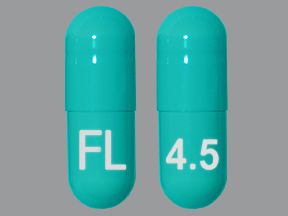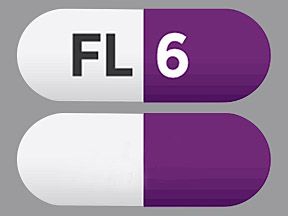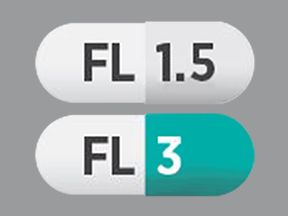The prescribed dosage for Vraylar (cariprazine) may vary depending on a person’s individual treatment plan. Other factors, including your specific diagnosis and medical history, may affect your Vraylar dosage.
Boxed warnings
This drug has two boxed warnings. One is about the risk of suicidal thoughts and behaviors. The second warning is about the increased risk of death in older adults with psychosis related to dementia. These are serious warnings from the Food and Drug Administration (FDA). A boxed warning alerts doctors and patients about drug effects that may be dangerous.
Risk of suicidal thoughts and behaviors: Vraylar is an antipsychotic medication, but it also has an antidepressant effect. Antidepressants can increase the risk of suicidal thoughts and behaviors in adults and children ages 25 years and younger with depression. The risk is highest in the first few months of Vraylar treatment. For this reason, Vraylar is typically not prescribed to children.
If you have thoughts of suicide during Vraylar treatment, call 911 or your local emergency number. In the United States, you can also call the Suicide and Crisis Lifeline at 988 or text HOME to the Crisis Text Line at 741741. You can also refer to this article for ways to seek support.
Increased risk of death in older adults with dementia-related psychosis: Antipsychotic drugs, such as Vraylar, may increase the risk of death in adults ages 65 years and older who have dementia-related psychosis. For this reason, Vraylar is typically not prescribed to this group of people.
If you have concerns about these boxed warnings, refer to this article on Vraylar’s side effects. You can also talk with your doctor or pharmacist.
Show MoreThe following information describes Vraylar’s typical dosages and other details about the drug.
When taking Vraylar, always follow the dosage prescribed by your doctor. Strength is measured in milligrams (mg).
| Condition | Starting dosage | Typical dosage range | Maximum dosage |
|---|---|---|---|
| bipolar depression | 1.5 mg once daily | 1.5 to 3 mg once daily | 3 mg once daily |
| manic or mixed episodes of bipolar I disorder | 1.5 mg once daily | 3 to 6 mg once daily | 6 mg once daily |
| schizophrenia | 1.5 mg once daily | 1.5 to 6 mg once daily | 6 mg once daily |
| depression | 1.5 mg once daily | 1.5 to 3 mg once daily | 3 mg once daily |
Vraylar form
Vraylar comes as a capsule that you swallow.
Vraylar strengths
Vraylar comes in four strengths:
- 1.5 mg
- 3 mg
- 4.5 mg
- 6 mg
Typically, your doctor will start your treatment with a low dosage. Then, they’ll adjust it over time to reach the amount that’s right for you. This will be based on a dosage guide. Your doctor will ultimately prescribe the smallest dosage that provides the desired effect.
The following information describes dosages that are commonly taken or recommended. However, be sure to take the dosage your doctor prescribes for you. Your doctor will determine the best dosage to fit your needs.
Dosage for depression
Major depressive disorder (MDD) is commonly referred to as depression. For treating depression, the recommended starting dosage is 1.5 mg taken once daily. On day 15 of treatment, your doctor may increase your daily dose to 3 mg. The maximum recommended dosage of Vraylar for depression is 3 mg once daily.
For treating depression, you’ll take Vraylar in combination with an antidepressant. Your doctor will give you dosage instructions for the antidepressant as well as for Vraylar.
Dosage for bipolar depression
The recommended starting dose of Vraylar for bipolar depression is 1.5 mg taken once daily. On day 15 of treatment, your doctor may increase your daily dose to 3 mg. This is the maximum dose of Vraylar for bipolar depression.
Dosage for manic or mixed episodes of bipolar I disorder
For bipolar I disorder, the recommended starting dosage is 1.5 mg on day 1. On day 2, your doctor will likely increase your Vraylar dose to 3 mg once daily.
If necessary, your doctor may slowly increase your dosage over time. The maximum dosage for bipolar I disorder is 6 mg once daily.
Dosage for schizophrenia
For schizophrenia, the recommended starting dosage is 1.5 mg on day 1. On day 2, your doctor may increase your dosage to 3 mg once daily. And, if needed, they may slowly increase your Vraylar dosage over time. The maximum recommended dosage for schizophrenia is 6 mg once daily.
Long-term treatment
For treating manic or mixed episodes of bipolar I disorder, you may take Vraylar for a few weeks. Your doctor will let you know how long to take the drug for this use.
For the other conditions Vraylar is prescribed for, Vraylar is meant to be a long-term treatment. If you and your doctor determine that Vraylar is safe and effective for you, you’ll likely take it long term.
If you miss a dose of Vraylar, talk with your doctor or pharmacist about when to take your next dose.
To help make sure that you don’t miss a dose, try using a medication reminder. This can include setting an alarm or using a timer. You could also download a reminder app on your phone.
The Vraylar dosage your doctor prescribes will depend on several factors. These include:
- the type and severity of the condition you’re taking Vraylar to treat
- whether you experience side effects from Vraylar
- whether you take other medications
Other medical conditions you have can also affect your Vraylar dosage.
Dosage adjustments
It’s important to talk with your doctor about all the medications you take. Your doctor may adjust your dosage of Vraylar if you are taking certain medications. These include CYP3A4 inducers or CYP3A4 inhibitors.
CYP3A4 inducers and CYP3A4 inhibitors can affect the level of CYP3A4 in your body. CYP3A4 is a liver enzyme (type of protein) that helps metabolize and remove certain medications from your body.
Vraylar comes as a capsule that you swallow. You’ll likely take Vraylar once daily with or without food.
ACCESSIBLE DRUG LABELS AND CONTAINERSIf you’re having trouble reading your prescription label, talk with your doctor or pharmacist. Some pharmacies offer labels with large print, braille, or a code you scan with a smartphone to convert text to speech. If your local pharmacy doesn’t have these options, your doctor or pharmacist might be able to recommend a pharmacy that does.
If you’re having trouble opening medication bottles, ask your pharmacist about putting Vraylar in an easy-open container. They may also recommend tools that make it easier to open bottles.
It’s not known if Vraylar causes drug dependence or whether it could be misused. (With dependence, your body needs the drug to feel like it usually does. Misuse is taking a drug in a way other than how your doctor prescribes it.)
Drug dependence and misuse weren’t studied in clinical trials of Vraylar. So it’s not known what effects Vraylar may cause if it’s misused.
Talk with your doctor if you have questions about dependence or misuse with Vraylar.
If you take more Vraylar than your doctor prescribes, you may develop serious side effects. It’s important that you do not take more Vraylar than your doctor advises.
Symptoms of an overdose
Overdose symptoms of Vraylar can include:
- orthostatic hypotension (low blood pressure when moving from sitting to standing)
- excessive drowsiness
If you take more than the recommended amount of Vraylar
Call your doctor right away if you believe you’ve taken too much Vraylar. Another option is to call America’s Poison Centers at 800-222-1222 or use its online tool. If you have severe symptoms, immediately call 911 or your local emergency number or go to the nearest emergency room.
The dosages in this article are typical dosages provided by the drug’s manufacturer. If your doctor recommends Vraylar for you, they will prescribe the dosage that’s right for you. Always follow the dosage that your doctor prescribes for you.
As with any drug, never change your dosage of Vraylar without your doctor’s recommendation. If you have questions about the dosage of Vraylar that’s right for you, talk with your doctor.
Besides learning about dosage, you may want other information about Vraylar. These additional articles might be helpful to you:
- More about Vraylar: For information about other aspects of Vraylar, refer to this Vraylar overview article.
- Interactions: For details about drugs and conditions that may affect Vraylar, see this Vraylar interactions article.
- Side effects: To learn about effects that Vraylar may cause, see this article about Vraylar’s side effects. You can also look at the Vraylar prescribing information.
- Cost: See this article for details about Vraylar’s cost and savings tips.
- Drug comparison: Find out how Vraylar compares with Abilify and Latuda.
Disclaimer: Medical News Today has made every effort to make certain that all information is factually correct, comprehensive, and up to date. However, this article should not be used as a substitute for the knowledge and expertise of a licensed healthcare professional. You should always consult your doctor or another healthcare professional before taking any medication. The drug information contained herein is subject to change and is not intended to cover all possible uses, directions, precautions, warnings, drug interactions, allergic reactions, or adverse effects. The absence of warnings or other information for a given drug does not indicate that the drug or drug combination is safe, effective, or appropriate for all patients or all specific uses.




